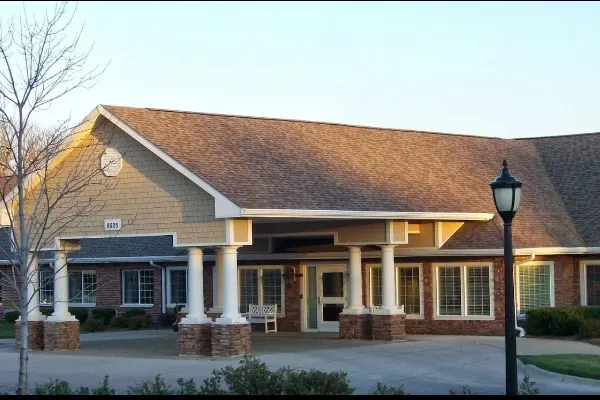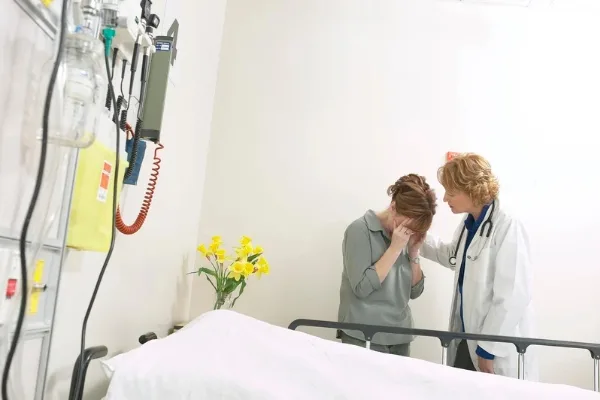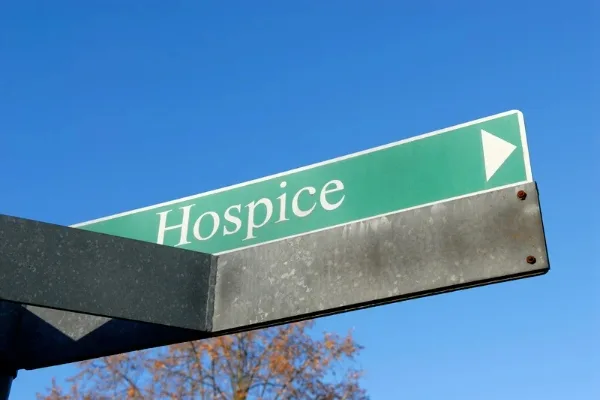Glen Oaks, an Alzheimer’s care facility, mistakenly pronounced a woman dead. As a result, the Iowa Department of Inspections and Appeals has fined them $10,000. However, the funeral director shockingly discovered that the woman was still alive when he unzipped her body.

Facility’s Side Of The Story
In December 2021, the Glen Oaks Alzheimer’s Special Care Center in Urbandale, Iowa admitted a 66-year-old woman with early-onset dementia, anxiety, and depression. Her deteriorating brain prompted her to move to hospice care.

The Iowa Department of Inspections and Appeals Health Facilities Division released a citation. The hospice care staff provided services on January 3rd before ending her night shift. An LPN was also on duty. The staff observed the patient at 6 a.m. with an open mouth, fixed eyes, and no breath sounds.
The LPN declared the patient dead after failing to find an apical pulse with her stethoscope. She contacted the family and hospice nurse on call. Afterward, the hospice then agreed to contact the funeral home.

A Turmoil Of Events
At 7:38 am, the Ankeny Funeral Home and Crematory’s on-call hospice nurse practitioner and funeral director confirmed the woman’s death.
Later on, the funeral home staff at 8:26 a.m. unzipped the bag to discover the patient breathing in short breaths. This prompted them to instantly call 911 and hospice for assistance.
Emergency personnel rushed her to Mercy West Lakes Hospital ER and quickly confirmed that she was breathing but unresponsive. The family contacted the hospice staff and confirmed that the DNR was valid and in effect. They then transported her back to Glen Oaks.
At the hospice care facility, the patient received around-the-clock treatment and care from the dedicated staff. On January 5th at 1:40 a.m., after a battle with her illness, she passed away peacefully – just 2 days after the mistaken death. She died in the presence of her loving family members.

Investigation And Statement
The investigating authorities found that the Alzheimer’s care center had failed to give proper instructions for guaranteeing appropriate care and services when handling a patient’s death. Lisa Eastman, executive director of Glen Oaks that they have been communicating with the woman’s family.

In a statement by Eastman, “We care deeply about our residents and we remain fully committed to supporting their end-of-life care.”
She then ensures that their staff are regularly instructed on the best ways to provide compassionate end-of-life care and accompany residents through their death transition.
All of our employees are given regular training in how best to support end-of-life care and the death transition for our residents
No criminal charges are being pursued, according to the Ankeny Police Department spokesperson Sgt. Corey Schneden. Dignity Memorial, the parent company of Ankeny Funeral Home & Crematory, declined to comment when contacted about the issue.
According to Schneden’s email to the local news, this was said, “Out of respect for the privacy and confidentiality of the families we are honored to serve, we are not in a position to comment further on this matter.”

Not The First Rodeo
Glen Oaks Alzheimer’s Special Care Center also had a visit report last December of 2021. The report also noted that they had failed to fulfill the conditions for other written violations that had been documented. For instance, five personnel failed to take the necessary memory-care training.
The facility violated training, drug storage, and other protocols. The DIA reduced the care center’s fine from $500 to $325 in February 2022. The center has a history of visits, complaints, and fines since 2009.
Read our latest story about a nursing home facing multiple lawsuits.
The Role Of Medical Professionals On Death Declaration Procedures
AMDA states that the legal policies surrounding dying to vary across states. Determination of death can be done by the following:
- Medical personnel such as EMS, unlicensed doctors, RNs, and Hospice Nurses can provide various services depending on qualifications and settings, with a physician or physician extender (PA or NP) required where appropriate.
- A death certificate must be filed before burial can take place. This includes the identification of the time and cause of death to determine if a medical examiner or coroner needs to get involved.
Danielle Knapp, the executive director of the Iowa Funeral Directors Association, has also outlined the various steps involved in confirming death and sending the body to a funeral home. It is necessary to notify the family and make arrangements to pick up the body, which can take long hours.
She emphasized the complexity of the task but clarified that funeral directors are never responsible for declaring someone dead. Knapp mandated that funeral homes must sign an official death certificate before hosting funerals.
According to the Iowa Board of Medicine, not signing a death certificate on time and correctly can lead to disciplinary action for medical license holders. Iowa Code section 144.28 outlines the rules for signing death certificates.
Depending on the cause of death, certain individuals may need to provide medical certification. There are two causes of death for which signatures from different people may be necessary:
- Natural – Medical practitioners must sign off on the death certificate if a patient’s illness or condition caused their death.
- Non-natural – The medical examiner of the respective state or county must be informed and should conduct an investigation.
Nurse Responsibilities
The AMDA has laid out specific protocols that nurses can be part of. The protocols include the following points:
- It is essential for healthcare providers, such as physicians, nurses, etc., to ascertain the advance directives and treatment preferences of their patients.
- Nurses should be allowed to pronounce the death of patients in care facilities, according to state regulations.
- The nurse or Physician should document a thorough evaluation of the patient before declaring death.
- Prompt notification of the Attending Physician should be provided after death has been determined, regardless of who makes the determination, during the entire dying process.
- Physicians should be the sole certifiers of death outside of medical settings due to the complexity of such conditions.

A Lesson To Live By
According to Lowey’s book, “There are often several nursing interventions and activities for the nurse to perform during the imminent phase.”
In preparing for a patient’s death, communication between all involved parties is essential and must remain constant, as the patient’s condition might change at any moment.
Hospice staff understands that even if patients appear to be unresponsive, they can still sense the presence of loved ones. Therefore, should let families know and encourage them to interact with their loved ones through conversation and physical contact.
Nurses have multiple duties in the imminent phase, such as quickly analyzing, reporting, and responding to patient changes. In the recent case that everyone was a part of, proper implementation of this protocol would have been extremely beneficial.
Read how an FL wife has not been able to cope properly and killed her sick husband.